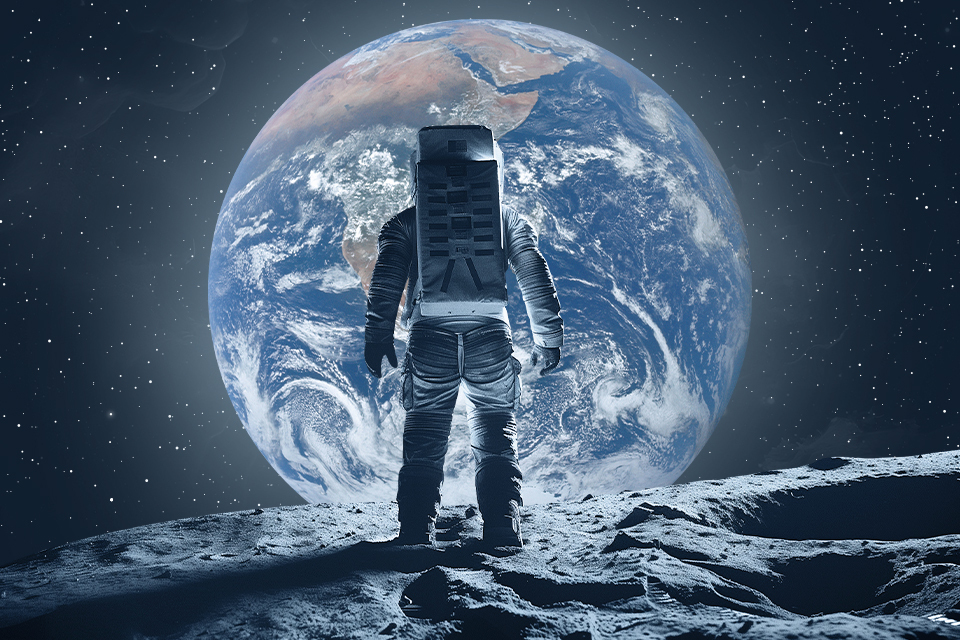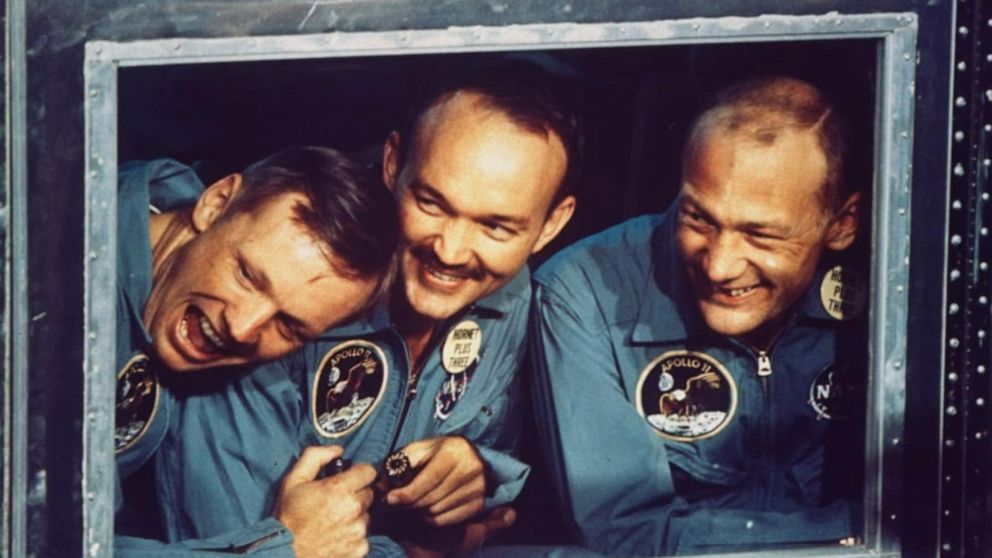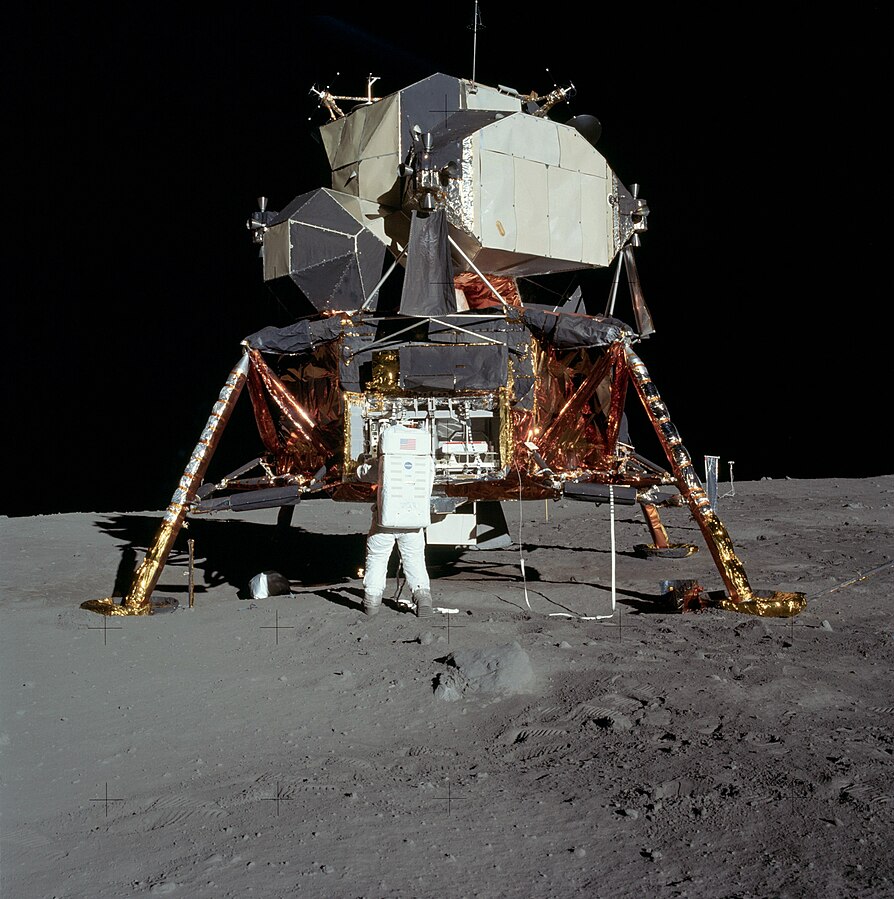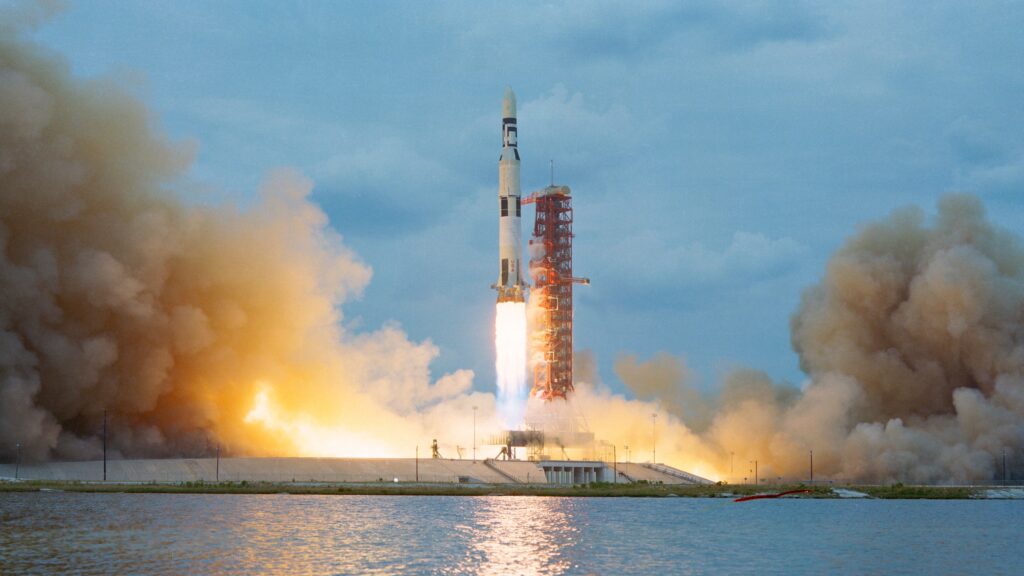55 years ago, the astronauts aboard the lunar module of the Apollo 11 mission became the first people to not only land on the Moon, but also launch into space from another celestial body. Was it difficult to do this? Let’s figure it out together.

Apollo 11 astronauts on the Moon
55 years ago, the astronauts of the Apollo 11 mission made the first ever landing on the Moon. More precisely, two of them did it: Neil Armstrong and Buzz Aldrin. They were on board the Eagle lunar module when it reached the surface of our satellite. At that time, Michael Collins was waiting for them to return aboard the command module, which stayed in orbit.
The landing was not easy for Armstrong and Aldrin. All the time they were looking for a suitable site, the module was consuming fuel to stay above the surface of our satellite. If this had lasted too long, the landing would have had to be canceled.

For it was not a one-way trip from the very beginning. After all, 21 hours later, they became the first people to successfully launch from the surface of another celestial body.
Is it difficult to launch from the surface of the Moon?
To launch three astronauts to the Moon, engineers had to build a giant Saturn 5 rocket 110 meters high. It would seem that a vehicle launched from the Moon could not possibly weigh the 4.6 tons that Eagle had when it was launched from the Moon. However, this how it was.
First of all, it should be noted that during the launch from the Moon, the module with astronauts did not have to carry fuel and supplies for returning to Earth. All of this remained on the command module, where Collins was stationed. That is, all Armstrong and Aldrin had to do was launch from the Moon, enter orbit, and dock with it.

At the same time, the force of gravity on the Moon is 6 times less than on Earth, and the orbital speed is not 8 km/s, as for our planet, but only 1.6 km. In addition, it should be borne in mind that the Tsiolkovsky formula, which determines the amount of fuel that must be on board a rocket to enter space, also takes into account its own weight, which must be lifted to where it is needed.
So, in fact, the fuel needed to launch from the Moon was not five or six times, but ten times less than on Earth. In addition, the astronauts left the so-called lander on the lunar surface, i.e. the supports that touched the ground during the landing, the fuel tanks, and the frame on which all this was mounted. As a result, the payload on board the module was only about 400 kg.
Some questions about the launch
Of course, this decision meant that if the part of the module in which Armstrong and Aldrin were located had to re-enter the surface, they would not have been able to do so. But in this situation, they would have died anyway.

One of the questions that could arise about launching from the lunar surface is that there is no atmosphere there. Therefore, the usual aerodynamic flight is not possible there, and an airplane or helicopter would remain on the surface.
However, the Apollo astronauts used a rocket engine. Its disadvantage, compared to propellers and jet turbines, is its “gluttony” for fuel. But it does not interact with the environment in any way during operation. That is why it is used in a vacuum. The absence of an atmosphere even made it easier to launch from the Moon, because during the flight we did not have to overcome its resistance.
Finally, fuel savings continued after the command and lunar modules docked. The astronauts went to the first one, transferred all the collected samples to it, undocked the second one, which then fell to the lunar surface.
Will it be difficult to launch from the Moon in the future?
There was indeed a difficulty in launching from the Moon. However, it was not in what had to be done on the Moon, but in what had happened on Earth beforehand. After all, no matter how small the mass of fuel and all the structures needed to launch from the Moon, they all had to be brought from Earth. In fact, that’s why Saturn 5 was so big. All of this was contained inside it, and in addition, it carried the fuel that was needed to launch these structures into orbit, send them to the Moon, and brake near it.
All this raises certain questions about how the Moon will be explored in the future. After all, it is planned to build a base on the Moon. Obviously, it will not be possible to transport vehicles for launch from the Earth’s surface every time. And even transporting fuel for this purpose will be too expensive.
The only way out is to produce fuel directly on the Moon, for example, by decomposing the water ice at its poles into hydrogen and oxygen. The vehicles themselves, which will travel between the surface and orbit, will resemble the Apollo 11 lunar module, but will be able to land on and take off from the Moon multiple times.


